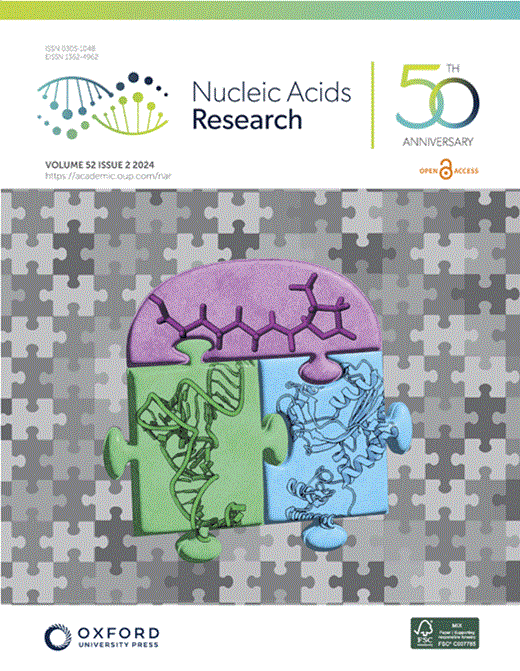The ZBTB24-CDCA7-HELLS axis suppresses the totipotent 2C-like reprogramming by maintaining Dux methylation and repression
IF 16.6
2区 生物学
Q1 BIOCHEMISTRY & MOLECULAR BIOLOGY
引用次数: 0
Abstract
Two-cell-like cells (2CLCs), a rare population (∼0.5%) in mouse embryonic stem cell (mESC) cultures, are in a transient totipotent-like state resembling that of 2C-stage embryos, and their discovery and characterization have greatly facilitated the study of early developmental events, such as zygotic genome activation. However, the molecular determinants governing 2C-like reprogramming remain to be elucidated. Here, we show that ZBTB24, CDCA7, and HELLS, components of a molecular pathway that is involved in the pathogenesis of immunodeficiency, centromeric instability, and facial anomalies (ICF) syndrome, function as negative regulators of 2C-like reprogramming by maintaining DNA methylation of the Dux cluster, a master inducer of the 2C-like state. Disruption of the ZBTB24-CDCA7-HELLS axis results in Dux hypomethylation and derepression, leading to dramatic upregulation of 2C-specific genes, which can be reversed by site-specific re-methylation in the Dux promoter. We also provide evidence that CDCA7 is enriched at the Dux cluster and recruits the CDCA7–HELLS chromatin remodeling complex to constitutive heterochromatin. Our study uncovers a key role for the ZBTB24-CDCA7-HELLS axis in safeguarding the mESC state by suppressing the 2C-like reprogramming.求助全文
约1分钟内获得全文
求助全文
来源期刊

Nucleic Acids Research
生物-生化与分子生物学
CiteScore
27.10
自引率
4.70%
发文量
1057
审稿时长
2 months
期刊介绍:
Nucleic Acids Research (NAR) is a scientific journal that publishes research on various aspects of nucleic acids and proteins involved in nucleic acid metabolism and interactions. It covers areas such as chemistry and synthetic biology, computational biology, gene regulation, chromatin and epigenetics, genome integrity, repair and replication, genomics, molecular biology, nucleic acid enzymes, RNA, and structural biology. The journal also includes a Survey and Summary section for brief reviews. Additionally, each year, the first issue is dedicated to biological databases, and an issue in July focuses on web-based software resources for the biological community. Nucleic Acids Research is indexed by several services including Abstracts on Hygiene and Communicable Diseases, Animal Breeding Abstracts, Agricultural Engineering Abstracts, Agbiotech News and Information, BIOSIS Previews, CAB Abstracts, and EMBASE.
 求助内容:
求助内容: 应助结果提醒方式:
应助结果提醒方式:


